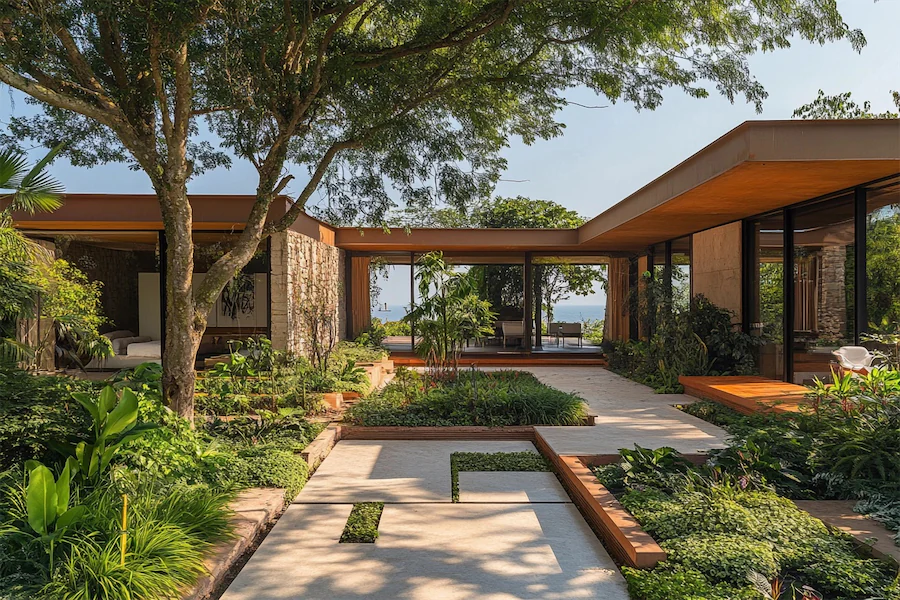An Open-Air Garden is an outdoor space designed to blend natural beauty with functional living areas, creating a seamless transition between indoor comfort and the refreshing ambiance of the outdoors. These gardens serve as extensions of living spaces, offering areas for relaxation, entertainment, and connection with nature.
History and Origins of Open-Air Gardens
The concept of open-air gardens has evolved over centuries, drawing inspiration from various cultures that value outdoor living. In Mediterranean regions, courtyards and terraces have long been integral to homes, providing cool retreats and social spaces. Similarly, traditional Japanese gardens emphasize harmony between indoor and outdoor environments. In contemporary design, open-air gardens continue to adapt, incorporating modern aesthetics and functionalities to suit diverse climates and lifestyles.
Key Features of Open-Air Gardens
- Integrated Structures: Incorporating elements like pergolas, gazebos, or open-air pavilions provides shade and defines spaces for dining or lounging. For instance, a lath house with an open grid design offers a sheltered area while maintaining a connection to the surrounding garden.
- Natural Materials: Utilizing materials such as wood, stone, and bamboo enhances the organic feel of the garden and ensures durability. A flagstone path leading through a potting shed exemplifies the use of natural materials to create functional and aesthetic garden features.
- Seamless Indoor-Outdoor Flow: Designing spaces that allow easy movement between the home and garden encourages frequent use and enjoyment of the outdoor area. Open-air rooms on patios exemplify this concept, providing comfortable living spaces that blend indoor amenities with outdoor freshness.
Applications of Open-Air Gardens
- Residential Spaces: Homeowners can expand their living areas by creating open-air gardens that serve as outdoor kitchens, dining rooms, or lounges, enhancing both functionality and property value.
- Public Venues: Parks and cultural institutions can incorporate open-air theaters or pavilions to host events, fostering community engagement in natural settings. The White Arbor and Open Air Theater in Kurobe City, Japan, is an example of integrating performance spaces within a garden landscape.
- Hospitality Industry: Hotels and restaurants can offer guests unique experiences by designing open-air dining or relaxation areas that showcase the surrounding environment.
Considerations When Designing an Open-Air Garden
- Climate Adaptation: Selecting appropriate plants and materials that withstand local weather conditions ensures longevity and reduces maintenance.
- Privacy and Shelter: Incorporating elements like trellises, hedges, or screens provides privacy and protection from the elements, enhancing comfort.
- Sustainability: Implementing eco-friendly practices, such as using reclaimed materials and native plants, promotes environmental stewardship. Open Air Studios emphasizes sustainable landscape design that minimizes harm to existing land and resources.
Conclusion
Open-Air Gardens offer versatile solutions for enhancing living spaces by merging the comfort of indoor environments with the invigorating qualities of nature. Through thoughtful design that considers structure, materials, and functionality, these gardens can transform ordinary spaces into inviting retreats that cater to various needs and preferences.
